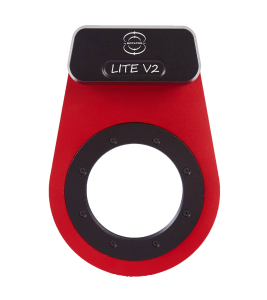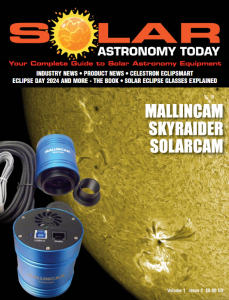The updated Wanderer Astro WandererRotator Lite V2 is an ultra lightweight and low-profile M68 motorized camera rotator. It is capable of high speed and precision, at up to 3.5 degrees/second with better than 0.1 degree accuracy. The wide 68mm aperture offers excellent illumination and the ultra-low 12mm profile is perfect for systems with limited back focus.
 Highlights of the updates of the new WandererRotator Lite V2 include:
Highlights of the updates of the new WandererRotator Lite V2 include:
– Updated design which offers a lower weight of 550g.
– The Type-C port is changed to Type-B port for a stronger connection.
– A more powerful motor eliminates a potential stalling problem of the pervious stepper motor.
– Due to the redesign of the transmission structure, the rotation speed is reduced to 3.5 degrees per second.
The Lite rotator is capable of a payload of up to 5Kg with a center of gravity 15cm away from the rotator. WandererAstro’s magnetic structure design guarantees zero flexure at any altitude. For users of alt-azimuth mounts and Dobsonians, field de-rotation is supported. The rotator is powered from a 12V 1A DC source and controlled from a USB type C port. It is ASCOM compatible and can be controlled by modern astrophotography software such as N.I.N.A.
You can learn more about the Wanderer Astro WandererRotator Lite V2 at www.wandererastro.com.

 And to make it easier for you to get the most extensive news, articles and reviews that are only available in the magazine pages of Astronomy Technology Today, we are offering a 1-year magazine subscription for only $6! Or, for an even better deal, we are offering 2 years for only $9. Click here to get these deals which only will be available for a very limited time. You can also check out a free sample issue here.
And to make it easier for you to get the most extensive news, articles and reviews that are only available in the magazine pages of Astronomy Technology Today, we are offering a 1-year magazine subscription for only $6! Or, for an even better deal, we are offering 2 years for only $9. Click here to get these deals which only will be available for a very limited time. You can also check out a free sample issue here.
The Sun is more active than it’s been in years and if that’s not enough, we have the Annular Solar Eclipse on October 14, 2023 and the Total Solar Eclipse on April 8, 2024! If you’d like to learn more about the technology behind solar observing, solar imaging and more, you can check out our new monthly magazine – Solar Astronomy Today. It’s free to read, no subscription needed and available here. And if you are preparing for the upcoming eclipses and want to know your equipment options from solar glasses to the most out of this world solar viewing and imaging options, check out our free publication – The Definitive Guide to Viewing and Imaging the Sun – simply click here and enjoy reading!

